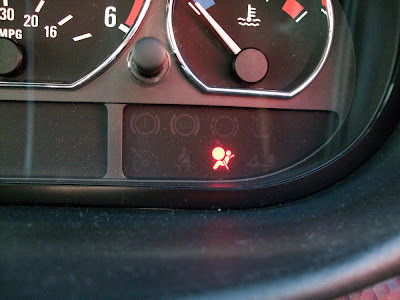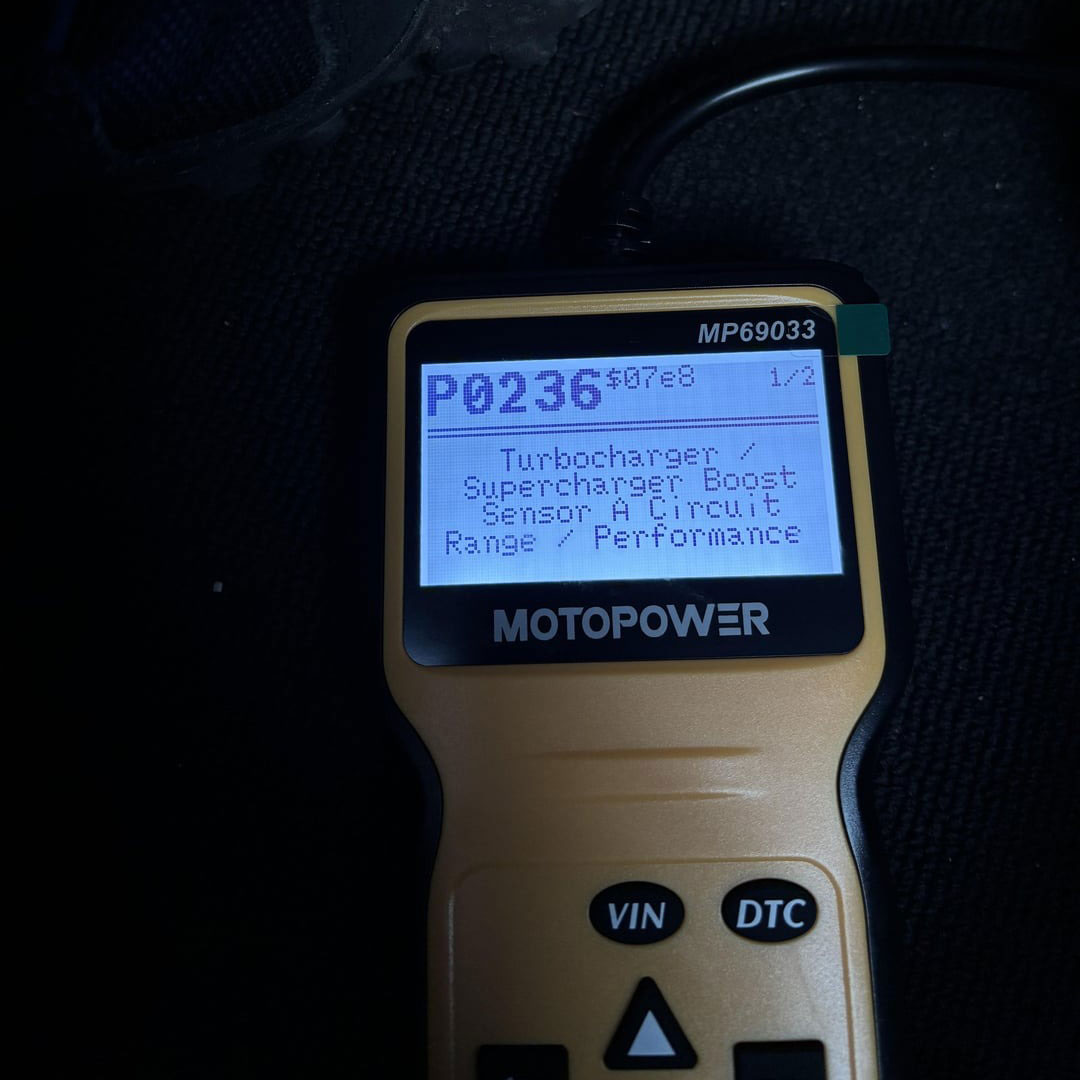
Audi DTC 01426:004 – Expert Solutions for Steering Wheel Control Issues
Contents
- 1. Understanding Audi DTC 01426:004
- What Does Audi DTC 01426:004 Mean?
- Common Symptoms Associated with DTC 01426:004
- Potential Causes of Audi DTC 01426:004
- Impact of the Issue
- 2. Step-by-Step Diagnostic Process for Audi DTC 01426:004
- Step 1: Initial Scan and Verification
- Step 2: Visual Inspection of Wiring and Connectors
- Step 3: Clock Spring Inspection
- Step 4: Steering Wheel Control Module Testing
- Step 5: CAN Bus Communication Check
- Step 6: Coding and Programming Verification
- Step 7: Final Testing and Verification
- Example Diagnostic Scenario
- Table: Diagnostic Tools and Their Functions
- Best Practices for Accurate Diagnosis
- 3. AutoExplain’s Solutions for Steering Wheel Control Issues
- Comprehensive Diagnostic Services
- Module Repair and Replacement
- Coding and Programming Services
- CAN Bus Diagnostics and Repair
- Clock Spring Repair and Replacement
- Benefits of Choosing AutoExplain
- Table: AutoExplain Services for Steering Wheel Control Issues
- Real-World Success Stories
- 4. Coding and Programming: The Key to Modern Car Repairs
- What is Car Coding?
- What is Car Programming?
- Why Coding and Programming are Important
- How AutoExplain Utilizes Coding and Programming
- Table: Coding and Programming Applications
- Tools for Coding and Programming
- The Future of Coding and Programming
- 5. The Financial Benefits of Professional Coding and Programming
- Increased Revenue
- Reduced Costs
- Enhanced Customer Satisfaction
- Table: Financial Benefits of Coding and Programming
- Real-World Examples
- Statistics and Research
- Investing in Your Shop’s Future
- How AutoExplain Can Help
- 6. Choosing the Right Diagnostic Tools for Audi Repairs
- Essential Diagnostic Tools for Audi Repairs
- Factors to Consider When Choosing Diagnostic Tools
- Table: Diagnostic Tool Comparison
- How AutoExplain Can Help
- 7. Common Mistakes to Avoid When Addressing Audi DTC 01426:004
- 1. Neglecting Basic Wiring Checks
- 2. Overlooking the Clock Spring
- 3. Failing to Verify CAN Bus Communication
- 4. Neglecting Coding and Programming Verification
- 5. Using Incompatible Parts
- 6. Ignoring Software Updates
- 7. Not Consulting Service Manuals
- 8. Neglecting a Final Test
- Table: Common Mistakes and Solutions
Experiencing the Audi Dtc 01426:004 error code? This indicates a “No Signal/Communication” fault with the Controls in Steering Wheel (E221), often resulting in non-functional horn, steering wheel controls, or paddle shifters. AutoExplain provides comprehensive diagnostic and programming solutions to resolve this issue, ensuring your Audi’s steering wheel controls are fully operational. We’ll guide you through the potential causes and how our services can effectively address them using car diagnostic tools, auto software, and car coding techniques.
1. Understanding Audi DTC 01426:004
What Does Audi DTC 01426:004 Mean?
Audi Diagnostic Trouble Code (DTC) 01426:004 signifies a communication problem with the steering wheel controls. Specifically, it points to a “No Signal/Communication” fault within the Controls in Steering Wheel module, designated as E221. This issue can disrupt the functionality of various steering wheel-mounted controls.
Common Symptoms Associated with DTC 01426:004
- Inoperative Horn: The horn fails to respond when pressed.
- Non-Functional Steering Wheel Controls: Buttons for audio, cruise control, and other functions do not work.
- Paddle Shifter Malfunction: If equipped, the paddle shifters may not engage or respond.
- Error Code Display: The DTC 01426:004 is logged in the vehicle’s diagnostic system.
Potential Causes of Audi DTC 01426:004
- Wiring Issues:
- Damaged or Loose Wiring: The wiring harness connecting the steering wheel controls to the vehicle’s electrical system may be damaged, frayed, or have loose connections.
- Connector Problems: Connectors may be corroded, disconnected, or improperly seated.
- Faulty Steering Wheel Control Module:
- Internal Failure: The steering wheel control module (E221) may have an internal malfunction, preventing it from sending or receiving signals.
- Software Glitches: Software issues within the module can cause communication errors.
- Clock Spring Issues:
- Clock Spring Damage: The clock spring, which maintains electrical continuity as the steering wheel turns, can become damaged, leading to signal loss.
- Clock Spring Misalignment: Improper alignment of the clock spring can also cause communication problems.
- CAN Bus Communication Problems:
- CAN Bus Interference: Issues with the Controller Area Network (CAN) bus, which facilitates communication between various modules in the vehicle, can disrupt the signal flow to and from the steering wheel controls.
- Module Compatibility: Incompatibility between the steering wheel control module and other modules in the vehicle.
- Incorrect Coding or Programming:
- Missing or Incorrect Coding: The steering wheel control module may not be properly coded or programmed to match the vehicle’s specifications.
- Software Incompatibility: Using incorrect or outdated software can lead to communication issues.
Impact of the Issue
The inability to use steering wheel controls affects convenience and safety, as essential functions like the horn and audio controls become inaccessible. Addressing this issue promptly is crucial for restoring full functionality and ensuring safe driving.
2. Step-by-Step Diagnostic Process for Audi DTC 01426:004
Resolving Audi DTC 01426:004 requires a systematic approach. Here’s a detailed diagnostic process to identify and fix the problem:
Step 1: Initial Scan and Verification
- Tool Required: Diagnostic scan tool (e.g., VCDS, OBDeleven, Launch X431).
- Procedure:
- Connect the scan tool to the vehicle’s OBD-II port.
- Perform a full system scan to confirm the presence of DTC 01426:004 and check for any other related error codes.
- Clear the DTC and test the steering wheel controls to see if the code reappears. This helps verify the issue is consistent.
Step 2: Visual Inspection of Wiring and Connectors
- Tools Required: Multimeter, inspection light.
- Procedure:
- Inspect the wiring harness and connectors associated with the steering wheel controls.
- Check for signs of damage, such as frayed wires, corrosion, or loose connections.
- Pay close attention to the connectors at the steering wheel control module, clock spring, and main wiring harness.
- Use a multimeter to test the continuity of the wires. Ensure there are no open circuits or shorts.
Step 3: Clock Spring Inspection
- Tools Required: Screwdrivers, inspection mirror.
- Procedure:
- Carefully remove the steering wheel to access the clock spring. Refer to the vehicle’s service manual for the correct removal procedure to avoid airbag deployment.
- Inspect the clock spring for any visible damage or misalignment.
- Check the clock spring’s electrical continuity using a multimeter. Ensure that all circuits are intact as the steering wheel is rotated.
Step 4: Steering Wheel Control Module Testing
- Tools Required: Diagnostic scan tool with module testing capabilities.
- Procedure:
- Use the scan tool to access the steering wheel control module (E221).
- Perform module-specific tests to check its functionality.
- Monitor the module’s data parameters to see if it is sending and receiving signals correctly.
- If the module fails the diagnostic tests, it may need to be replaced.
Step 5: CAN Bus Communication Check
- Tools Required: Oscilloscope, CAN bus analyzer.
- Procedure:
- Use an oscilloscope or CAN bus analyzer to monitor the CAN bus signals related to the steering wheel controls.
- Check for any interference, signal drops, or communication errors.
- Verify that the steering wheel control module is properly communicating with other modules on the CAN bus.
Step 6: Coding and Programming Verification
- Tools Required: Diagnostic scan tool with coding and programming capabilities.
- Procedure:
- Ensure that the steering wheel control module is correctly coded and programmed for the vehicle.
- Use the scan tool to verify the coding settings and update the software if necessary.
- Refer to the vehicle’s service manual or online resources for the correct coding parameters.
Step 7: Final Testing and Verification
- Procedure:
- After completing the necessary repairs or replacements, clear the DTC and perform a final test of the steering wheel controls.
- Ensure that all functions, including the horn, audio controls, and paddle shifters, are working correctly.
- Perform a final system scan to confirm that no error codes are present.
Example Diagnostic Scenario
Consider a 2010 Audi A4 with DTC 01426:004. A technician follows these steps:
- Initial Scan: Confirms DTC 01426:004 using VCDS.
- Visual Inspection: Finds a loose connector at the steering wheel control module.
- Connector Repair: Re-seats the connector and secures it properly.
- Final Testing: Clears the DTC and verifies that the steering wheel controls are now functioning correctly.
Table: Diagnostic Tools and Their Functions
| Tool | Function |
|---|---|
| Diagnostic Scan Tool | Reads and clears DTCs, performs module-specific tests, and allows coding and programming. |
| Multimeter | Tests the continuity of wires and checks for voltage. |
| Oscilloscope | Monitors CAN bus signals and detects communication errors. |
| CAN Bus Analyzer | Analyzes CAN bus traffic and identifies issues in data transmission. |
| Inspection Light | Provides illumination for visual inspection of wiring and connectors. |
| Screwdrivers | Used for removing and installing components. |
| Vehicle Service Manual | Provides detailed procedures and specifications for component removal, installation, and coding. |
Best Practices for Accurate Diagnosis
- Refer to Service Manuals: Always consult the vehicle’s service manual for specific procedures and specifications.
- Use High-Quality Tools: Employ reliable diagnostic tools to ensure accurate readings and results.
- Double-Check Connections: Ensure all connections are secure and free from corrosion.
- Stay Updated on Software: Keep diagnostic tools and software updated to access the latest information and features.
By following this step-by-step diagnostic process, technicians can effectively identify and resolve the root cause of Audi DTC 01426:004, restoring the functionality of the steering wheel controls and ensuring vehicle safety.
3. AutoExplain’s Solutions for Steering Wheel Control Issues
At AutoExplain, we provide specialized services to address steering wheel control issues like Audi DTC 01426:004. Our expertise covers diagnostics, module repair, coding, and programming, ensuring your vehicle functions optimally.
Comprehensive Diagnostic Services
Our diagnostic services go beyond simply reading error codes. We conduct thorough evaluations to pinpoint the exact cause of the problem:
- Advanced Diagnostic Tools: We use state-of-the-art diagnostic equipment such as VCDS, OBDeleven, and Launch X431 to accurately identify issues. These tools allow us to delve deep into the vehicle’s systems and retrieve detailed information.
- Expert Technicians: Our technicians are highly trained and experienced in diagnosing complex electrical and electronic issues in Audi vehicles. They stay updated with the latest technologies and diagnostic techniques.
- Detailed Reporting: We provide comprehensive diagnostic reports that outline the identified problems, potential causes, and recommended solutions. This transparency helps you make informed decisions about the necessary repairs.
Module Repair and Replacement
If the steering wheel control module (E221) is faulty, we offer repair and replacement services:
- Module Testing: We rigorously test the module to confirm its malfunction. This includes checking its communication capabilities, signal output, and internal components.
- Component-Level Repair: Whenever possible, we perform component-level repairs to save costs. This involves replacing faulty components within the module rather than replacing the entire unit.
- Genuine Parts: If replacement is necessary, we use only genuine Audi parts to ensure compatibility and reliability. Our access to original equipment manufacturer (OEM) parts guarantees the highest quality.
Coding and Programming Services
Proper coding and programming are essential for the steering wheel controls to function correctly:
- Module Coding: We ensure the replacement module is correctly coded to match the vehicle’s specifications. This involves entering the correct parameters and settings to enable the module to communicate effectively with other systems.
- Software Updates: We provide software updates to the steering wheel control module to address any known issues and improve performance. This ensures that the module operates with the latest software version.
- Custom Programming: We offer custom programming services to enable additional features or functions of the steering wheel controls. This includes programming for retrofits or upgrades.
CAN Bus Diagnostics and Repair
Issues with the CAN bus can disrupt communication with the steering wheel controls. Our services include:
- CAN Bus Testing: We use oscilloscopes and CAN bus analyzers to monitor the CAN bus signals and identify any communication errors. This allows us to pinpoint the source of the interference or signal loss.
- Wiring Repair: We repair damaged wiring and connectors in the CAN bus network to restore proper communication. This includes fixing shorts, opens, and corrosion.
- Module Integration: We ensure all modules on the CAN bus are correctly integrated and communicating with each other. This involves verifying the module settings and performing any necessary adjustments.
Clock Spring Repair and Replacement
The clock spring is a critical component for maintaining electrical continuity as the steering wheel turns. Our services include:
- Clock Spring Inspection: We inspect the clock spring for any signs of damage or wear. This includes checking for broken wires, cracks, and misalignment.
- Clock Spring Replacement: If the clock spring is faulty, we replace it with a new, genuine Audi part. Our technicians ensure the new clock spring is correctly aligned and installed.
- Airbag System Check: After replacing the clock spring, we perform a thorough check of the airbag system to ensure it is functioning correctly. This is crucial for safety and reliability.
Benefits of Choosing AutoExplain
- Expertise: Our technicians have extensive experience with Audi vehicles and their complex electronic systems.
- Advanced Technology: We use the latest diagnostic and programming tools to ensure accurate and effective repairs.
- Genuine Parts: We use only genuine Audi parts for replacements to ensure compatibility and reliability.
- Customer Satisfaction: We are committed to providing excellent customer service and ensuring your complete satisfaction.
Table: AutoExplain Services for Steering Wheel Control Issues
| Service | Description |
|---|---|
| Diagnostic Services | Comprehensive evaluations using advanced tools to identify the root cause of the problem. |
| Module Repair/Replacement | Testing, component-level repair, and replacement of faulty steering wheel control modules with genuine Audi parts. |
| Coding and Programming | Ensuring correct module coding, software updates, and custom programming to enable additional features. |
| CAN Bus Diagnostics/Repair | Monitoring CAN bus signals, repairing damaged wiring, and ensuring correct module integration for seamless communication. |
| Clock Spring Repair/Replace | Inspection, repair, and replacement of faulty clock springs with genuine Audi parts, followed by a thorough airbag system check. |
Real-World Success Stories
- Case Study 1: 2012 Audi A6 with DTC 01426:004
- Problem: Steering wheel controls not functioning, DTC 01426:004 present.
- Solution: AutoExplain technicians diagnosed a faulty steering wheel control module. The module was replaced with a genuine Audi part and correctly coded.
- Result: Steering wheel controls fully restored, no error codes present.
- Case Study 2: 2015 Audi Q5 with Intermittent Horn Issues
- Problem: Intermittent horn functionality, accompanied by DTC 01426:004.
- Solution: AutoExplain technicians identified a damaged clock spring. The clock spring was replaced, and the airbag system was checked.
- Result: Horn functionality fully restored, and the airbag system confirmed to be working correctly.
By choosing AutoExplain, you can be confident that your Audi’s steering wheel control issues will be resolved efficiently and effectively. Our combination of expertise, advanced technology, and commitment to customer satisfaction ensures the best possible outcome.
4. Coding and Programming: The Key to Modern Car Repairs
Coding and programming are indispensable in modern automotive repairs, especially for resolving issues like the Audi DTC 01426:004. Understanding these processes can help you appreciate their importance and how AutoExplain leverages them for superior service.
What is Car Coding?
Car coding involves modifying a vehicle’s software to enable, disable, or customize certain features. It allows technicians to tailor the vehicle’s functions to meet specific needs or to ensure proper operation after component replacements.
- Module Adaptation: Coding ensures that a new module, like a steering wheel control module, is correctly integrated with the vehicle’s existing systems.
- Feature Enablement: Coding can activate hidden features or functions that are available but not enabled by default.
- Personalization: Coding allows vehicle owners to personalize certain settings, such as lighting configurations or display preferences.
What is Car Programming?
Car programming, also known as reflashing or software update, involves replacing the existing software in a vehicle’s electronic control unit (ECU) with a new version. This process is often necessary to fix software bugs, improve performance, or ensure compatibility with new components.
- Software Updates: Programming updates the ECU with the latest software version, which can resolve known issues and improve overall performance.
- ECU Replacement: When an ECU is replaced, it needs to be programmed with the correct software to function properly.
- Performance Tuning: Programming can be used to optimize engine performance, improve fuel efficiency, or enhance other aspects of the vehicle’s operation.
Why Coding and Programming are Important
- Ensuring Compatibility: Modern vehicles are equipped with numerous electronic control units (ECUs) that communicate with each other. Coding and programming ensure that these ECUs are compatible and can communicate effectively.
- Correcting Software Issues: Software glitches or bugs can cause a variety of problems, including warning lights, performance issues, and system malfunctions. Programming can fix these issues by updating the software to a corrected version.
- Enabling New Features: Coding can enable new features or functions that are not activated by default. This allows vehicle owners to customize their vehicles and enhance their driving experience.
- Improving Performance: Programming can optimize engine performance, improve fuel efficiency, and enhance other aspects of the vehicle’s operation. This can result in a smoother, more responsive, and more enjoyable driving experience.
- Meeting Emission Standards: Coding and programming can ensure that a vehicle meets the latest emission standards. This is particularly important for diesel vehicles, which may require software updates to comply with environmental regulations.
How AutoExplain Utilizes Coding and Programming
At AutoExplain, we use coding and programming extensively to provide superior service:
- Module Replacement: When we replace a steering wheel control module, we ensure it is correctly coded to match the vehicle’s specifications. This involves entering the correct parameters and settings to enable the module to communicate effectively with other systems.
- Software Updates: We provide software updates to the steering wheel control module to address any known issues and improve performance. This ensures that the module operates with the latest software version.
- Custom Programming: We offer custom programming services to enable additional features or functions of the steering wheel controls. This includes programming for retrofits or upgrades.
Table: Coding and Programming Applications
| Application | Description |
|---|---|
| Module Replacement | Ensuring a new module is correctly integrated with the vehicle’s existing systems. |
| Software Updates | Addressing known software issues and improving overall performance. |
| Feature Enablement | Activating hidden features or functions that are available but not enabled by default. |
| Performance Tuning | Optimizing engine performance, improving fuel efficiency, and enhancing other aspects of the vehicle’s operation. |
| Emission Compliance | Ensuring that a vehicle meets the latest emission standards. |
Tools for Coding and Programming
- Diagnostic Scan Tools: Tools like VCDS, OBDeleven, and Launch X431 are essential for coding and programming. They allow technicians to access the vehicle’s ECUs, read and write data, and perform various coding and programming functions.
- Online Databases: Access to online databases, such as those provided by Audi, is crucial for obtaining the correct coding and programming information. These databases contain detailed information about each vehicle’s configuration and software versions.
- Specialized Software: Some coding and programming tasks require specialized software, such as ODIS (Offboard Diagnostic Information System), which is used by Audi dealerships.
The Future of Coding and Programming
As vehicles become increasingly complex and software-dependent, coding and programming will become even more important. Future trends include:
- Over-the-Air (OTA) Updates: Vehicles will be able to receive software updates wirelessly, without the need for a technician.
- Artificial Intelligence (AI): AI will be used to automate and simplify the coding and programming process, making it easier for technicians to perform complex tasks.
- Cybersecurity: As vehicles become more connected, cybersecurity will become a major concern. Coding and programming will be used to protect vehicles from hacking and other cyber threats.
By understanding the importance of coding and programming and how AutoExplain utilizes these processes, you can appreciate the value of our services and the benefits they provide.
5. The Financial Benefits of Professional Coding and Programming
Investing in professional coding and programming services, such as those offered by AutoExplain, can yield significant financial benefits for your auto repair shop. These benefits include increased revenue, reduced costs, and enhanced customer satisfaction.
Increased Revenue
- Expanded Service Offerings: Coding and programming allow you to offer a wider range of services, attracting more customers and increasing revenue. Services like ECU remapping, feature activation, and module retrofitting can be valuable additions to your service menu.
- Higher Service Prices: Coding and programming services command higher prices than traditional mechanical repairs. This is because they require specialized knowledge, skills, and equipment.
- Attracting High-End Clients: Offering advanced coding and programming services can attract owners of high-end vehicles, such as Audi, BMW, and Mercedes-Benz. These clients are often willing to pay more for quality service.
Reduced Costs
- Faster Diagnostic Times: Coding and programming tools can speed up the diagnostic process, reducing the time spent troubleshooting complex issues. This can free up technicians to work on other jobs, increasing overall productivity.
- Reduced Component Replacement: In some cases, coding and programming can fix software issues without the need for expensive component replacements. This can save customers money and increase their satisfaction.
- Fewer Reworks: Proper coding and programming can prevent comebacks and reworks, reducing the cost of labor and parts. This is because they ensure that repairs are done correctly the first time.
Enhanced Customer Satisfaction
- Improved Vehicle Performance: Coding and programming can improve vehicle performance, fuel efficiency, and overall driving experience. This can lead to happier customers and positive word-of-mouth referrals.
- Personalized Services: Coding allows you to offer personalized services, such as enabling custom features or settings. This can create a unique and memorable experience for customers.
- Faster Turnaround Times: With efficient coding and programming processes, you can complete repairs faster, reducing customer wait times and increasing their satisfaction.
Table: Financial Benefits of Coding and Programming
| Benefit | Description |
|---|---|
| Increased Revenue | Expanded service offerings, higher service prices, and attracting high-end clients. |
| Reduced Costs | Faster diagnostic times, reduced component replacement, and fewer reworks. |
| Enhanced Customer Satisfaction | Improved vehicle performance, personalized services, and faster turnaround times. |
Real-World Examples
- Scenario 1: ECU Remapping
- A customer wants to improve the performance of their Audi A4. By offering ECU remapping services, you can increase the engine’s horsepower and torque, providing a noticeable performance boost. This service can generate significant revenue and attract performance-oriented customers.
- Scenario 2: Feature Activation
- A customer wants to enable certain features on their Audi Q5, such as cornering lights or automatic folding mirrors. By offering coding services, you can activate these features, providing a personalized experience and increasing customer satisfaction.
- Scenario 3: Module Retrofitting
- A customer wants to retrofit a new navigation system or parking assist system in their Audi A6. By offering coding and programming services, you can ensure that the new module is correctly integrated with the vehicle’s existing systems, providing a seamless and reliable experience.
Statistics and Research
According to a study by SEMA (Specialty Equipment Market Association), coding and programming are among the fastest-growing segments in the automotive aftermarket. The study found that shops offering coding and programming services experienced higher revenue growth and profitability compared to those that did not.
Additionally, research by ASE (Automotive Service Excellence) indicates that technicians with coding and programming skills are in high demand and command higher salaries. This is because these skills are essential for repairing modern vehicles and providing advanced services.
Investing in Your Shop’s Future
Investing in coding and programming is an investment in your shop’s future. By offering these services, you can stay ahead of the curve, attract new customers, and increase your profitability.
How AutoExplain Can Help
AutoExplain offers comprehensive coding and programming solutions to help your shop succeed. Our services include:
- Training and Certification: We provide training and certification programs to equip your technicians with the skills and knowledge they need to perform coding and programming tasks.
- Equipment and Software: We offer a wide range of diagnostic and programming tools to meet your shop’s needs.
- Technical Support: We provide ongoing technical support to help you troubleshoot complex issues and get the most out of your coding and programming equipment.
By partnering with AutoExplain, you can take your shop to the next level and unlock the financial benefits of professional coding and programming.
6. Choosing the Right Diagnostic Tools for Audi Repairs
Selecting the appropriate diagnostic tools is crucial for effectively diagnosing and resolving issues in Audi vehicles, particularly when dealing with complex problems like DTC 01426:004. Here’s a guide to help you choose the right tools for your auto repair shop.
Essential Diagnostic Tools for Audi Repairs
-
Diagnostic Scan Tool (e.g., VCDS, OBDeleven, Launch X431):
- Function: Reads and clears Diagnostic Trouble Codes (DTCs), performs module-specific tests, provides live data streaming, and enables coding and programming.
- Key Features:
- Audi-specific diagnostic capabilities.
- User-friendly interface.
- Regular software updates.
- Compatibility with a wide range of Audi models.
- Benefits: Accurate identification of issues, efficient troubleshooting, and the ability to perform advanced functions like coding and programming.
-
Multimeter:
- Function: Tests the continuity of wires, checks for voltage, and measures resistance.
- Key Features:
- Digital display for accurate readings.
- Auto-ranging capability.
- Durable construction.
- Benefits: Essential for diagnosing electrical issues, verifying circuit integrity, and ensuring proper voltage levels.
-
Oscilloscope:
- Function: Monitors CAN bus signals, detects communication errors, and analyzes waveforms.
- Key Features:
- High bandwidth for accurate signal capture.
- Multiple channels for simultaneous monitoring.
- Advanced triggering options.
- Benefits: Crucial for diagnosing CAN bus-related issues, identifying signal interference, and ensuring proper communication between modules.
-
CAN Bus Analyzer:
- Function: Analyzes CAN bus traffic, identifies issues in data transmission, and decodes CAN messages.
- Key Features:
- Real-time data monitoring.
- Message filtering and decoding.
- Error detection and analysis.
- Benefits: Provides in-depth analysis of CAN bus communication, helping to pinpoint the root cause of complex issues.
-
Vehicle Service Manual:
- Function: Provides detailed procedures, specifications, and diagrams for component removal, installation, and coding.
- Key Features:
- Audi-specific information.
- Step-by-step instructions.
- Wiring diagrams and schematics.
- Benefits: Essential for performing accurate and safe repairs, ensuring proper procedures are followed, and avoiding damage to the vehicle.
Factors to Consider When Choosing Diagnostic Tools
- Audi-Specific Capabilities:
- Ensure that the diagnostic tools are specifically designed for Audi vehicles. This will ensure compatibility and access to Audi-specific diagnostic functions.
- Software Updates:
- Choose tools that offer regular software updates to ensure compatibility with the latest Audi models and access to the latest diagnostic information.
- User-Friendly Interface:
- Select tools with an intuitive and easy-to-use interface. This will reduce training time and improve technician efficiency.
- Technical Support:
- Opt for tools that come with reliable technical support. This will ensure that you can get help when you need it and resolve any issues quickly.
- Budget:
- Consider your budget when choosing diagnostic tools. While it is important to invest in quality tools, there are options available for a range of budgets.
Table: Diagnostic Tool Comparison
| Tool | Features | Benefits | Considerations |
|---|---|---|---|
| Diagnostic Scan Tool | Audi-specific diagnostics, live data streaming, coding and programming, user-friendly interface, regular software updates. | Accurate issue identification, efficient troubleshooting, advanced functions, improved technician productivity. | Ensure compatibility with Audi models, check for regular software updates, consider the user interface. |
| Multimeter | Digital display, auto-ranging capability, durable construction. | Essential for diagnosing electrical issues, verifying circuit integrity, ensuring proper voltage levels. | Choose a multimeter with accurate readings, consider the durability of the tool. |
| Oscilloscope | High bandwidth, multiple channels, advanced triggering options. | Crucial for diagnosing CAN bus issues, identifying signal interference, ensuring proper communication between modules. | Ensure high bandwidth for accurate signal capture, consider the number of channels needed. |
| CAN Bus Analyzer | Real-time data monitoring, message filtering and decoding, error detection and analysis. | Provides in-depth analysis of CAN bus communication, helps pinpoint the root cause of complex issues. | Consider the ease of use and the ability to decode CAN messages. |
| Vehicle Service Manual | Audi-specific information, step-by-step instructions, wiring diagrams and schematics. | Essential for performing accurate and safe repairs, ensuring proper procedures are followed, avoiding damage to the vehicle. | Ensure access to up-to-date service manuals for all Audi models. |
How AutoExplain Can Help
AutoExplain can help you choose the right diagnostic tools for your auto repair shop by providing:
- Expert Advice: We can provide expert advice on the best diagnostic tools for your specific needs and budget.
- Training Programs: We offer training programs to help your technicians learn how to use the diagnostic tools effectively.
- Technical Support: We provide ongoing technical support to help you troubleshoot complex issues and get the most out of your diagnostic tools.
By partnering with AutoExplain, you can ensure that your auto repair shop is equipped with the right diagnostic tools to effectively diagnose and resolve issues in Audi vehicles.
7. Common Mistakes to Avoid When Addressing Audi DTC 01426:004
When addressing Audi DTC 01426:004, it’s essential to avoid common mistakes that can lead to misdiagnosis, wasted time, and increased costs. Here are some pitfalls to watch out for:
1. Neglecting Basic Wiring Checks
- Mistake: Jumping straight to module replacement without thoroughly inspecting the wiring and connectors.
- Why it’s a Problem: Damaged or loose wiring is a frequent cause of communication issues. Replacing the module without addressing the wiring will not solve the problem.
- Solution: Always begin with a visual inspection of the wiring harness and connectors associated with the steering wheel controls. Check for signs of damage, corrosion, or loose connections. Use a multimeter to test the continuity of the wires and ensure there are no open circuits or shorts.
2. Overlooking the Clock Spring
- Mistake: Ignoring the clock spring as a potential source of the problem.
- Why it’s a Problem: The clock spring maintains electrical continuity as the steering wheel turns. Damage or misalignment can disrupt the signal flow to the steering wheel controls.
- Solution: Inspect the clock spring for any visible damage or misalignment. Check the clock spring’s electrical continuity using a multimeter while rotating the steering wheel.
3. Failing to Verify CAN Bus Communication
- Mistake: Assuming the issue is isolated to the steering wheel control module without checking the CAN bus communication.
- Why it’s a Problem: Communication issues on the CAN bus can disrupt the signal flow to and from the steering wheel controls.
- Solution: Use an oscilloscope or CAN bus analyzer to monitor the CAN bus signals related to the steering wheel controls. Check for any interference, signal drops, or communication errors.
4. Neglecting Coding and Programming Verification
- Mistake: Replacing the steering wheel control module without ensuring it is correctly coded and programmed for the vehicle.
- Why it’s a Problem: The module may not function properly if it is not correctly coded and programmed.
- Solution: Use a diagnostic scan tool to verify the coding settings and update the software if necessary. Refer to the vehicle’s service manual or online resources for the correct coding parameters.
5. Using Incompatible Parts
- Mistake: Using aftermarket or non-genuine parts that are not compatible with the vehicle.
- Why it’s a Problem: Incompatible parts can cause communication issues and may not function correctly.
- Solution: Always use genuine Audi parts or high-quality aftermarket parts that are specifically designed for the vehicle.
6. Ignoring Software Updates
- Mistake: Failing to update the software of the steering wheel control module or other related modules.
- Why it’s a Problem: Outdated software can cause compatibility issues and may not support the latest features.
- Solution: Check for software updates for the steering wheel control module and other related modules. Update the software to the latest version if necessary.
7. Not Consulting Service Manuals
- Mistake: Attempting repairs without consulting the vehicle’s service manual.
- Why it’s a Problem: Service manuals provide detailed procedures, specifications, and diagrams that are essential for performing accurate and safe repairs.
- Solution: Always consult the vehicle’s service manual for specific procedures and specifications.
8. Neglecting a Final Test
- Mistake: Failing to perform a final test of the steering wheel controls after completing the necessary repairs or replacements.
- Why it’s a Problem: It’s important to ensure that all functions are working correctly and that no error codes are present.
- Solution: Clear the DTC and perform a final test of the steering wheel controls. Ensure that all functions, including the horn, audio controls, and paddle shifters, are working correctly. Perform a final system scan to confirm that no error codes are present.
Table: Common Mistakes and Solutions
| Mistake | Why it’s a Problem | Solution |
|---|---|---|
| Neglecting Basic Wiring Checks | Damaged or loose wiring is a frequent cause of communication issues. | Always begin with a visual inspection of the wiring harness and connectors. Use a multimeter to test the continuity of the wires. |
| Overlooking the Clock Spring | Damage or misalignment can disrupt the signal flow to the steering wheel controls. | Inspect the clock spring for any visible damage or misalignment. Check the clock spring’s electrical continuity while rotating the steering wheel. |
| Failing to Verify CAN Bus Communication | Communication issues on the CAN bus can disrupt the signal flow to and from the steering wheel controls |

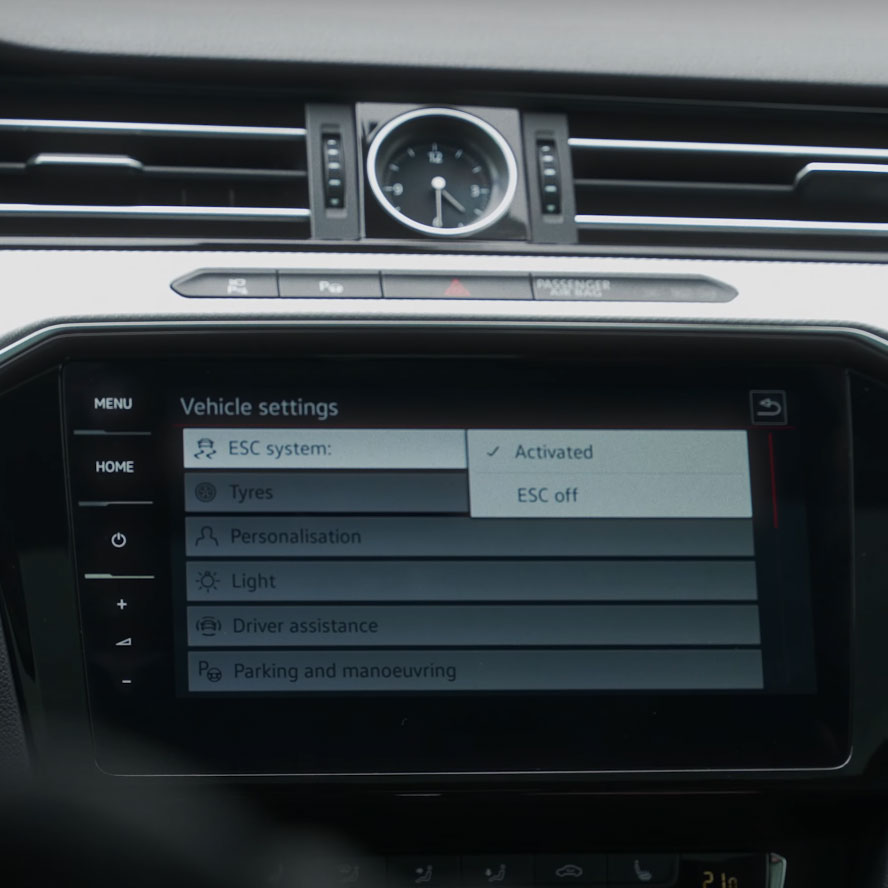
How to Deactivate ESC in Volkswagen, Audi, Skoda, or SEAT
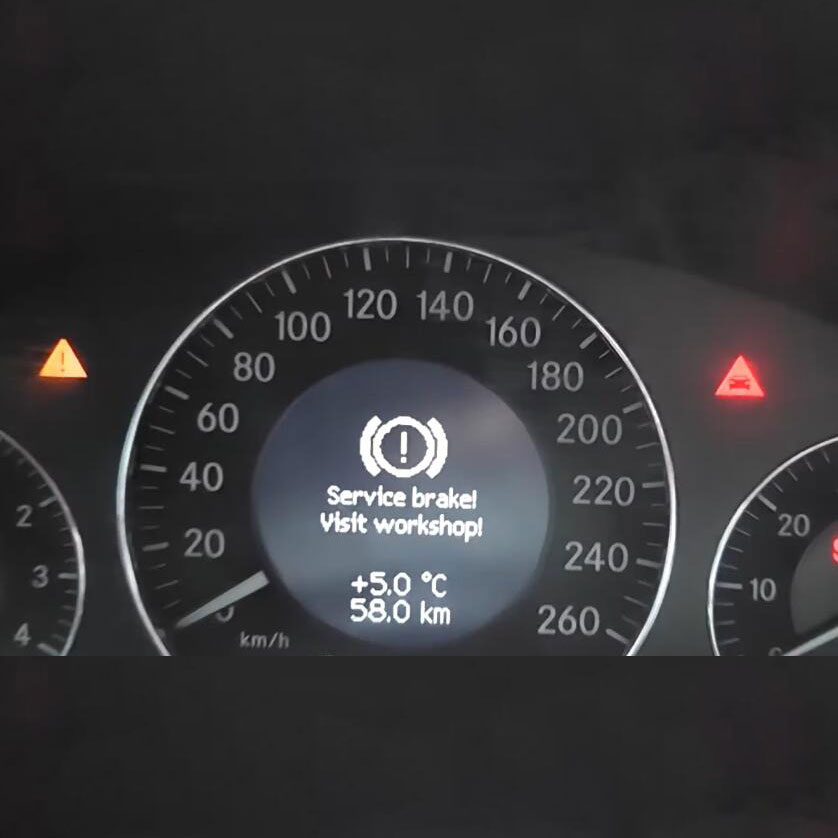
Mercedes Benz ‘Service Brake Visit Workshop’ Warning? Here’s What Dealers Don’t Tell You!
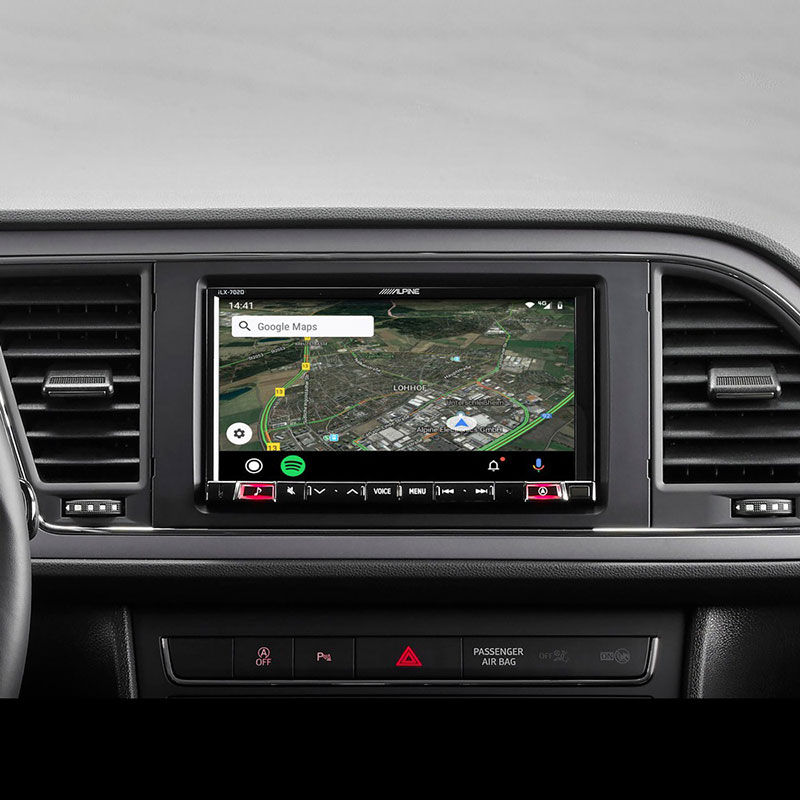
How to Perform Seat Navigation Update? – A Comprehensive Guide for Technicians





